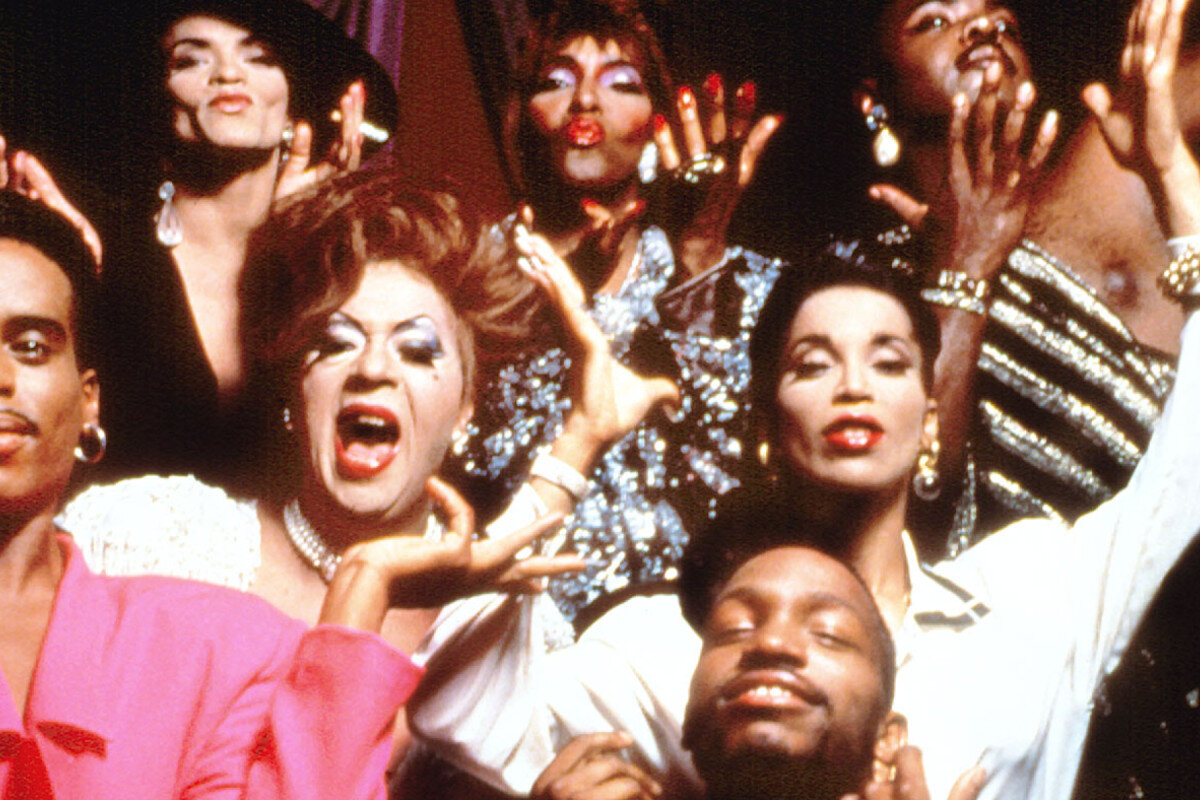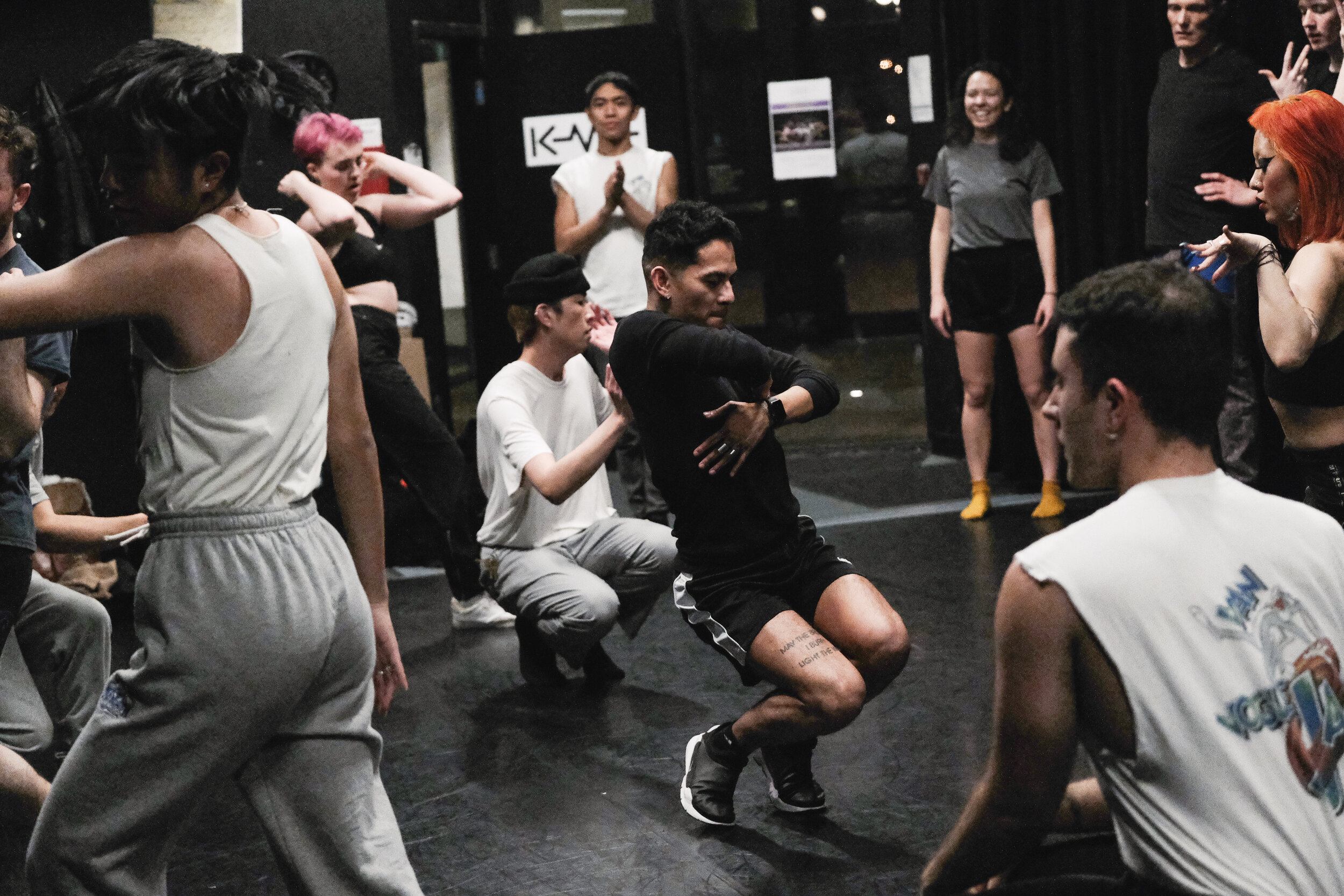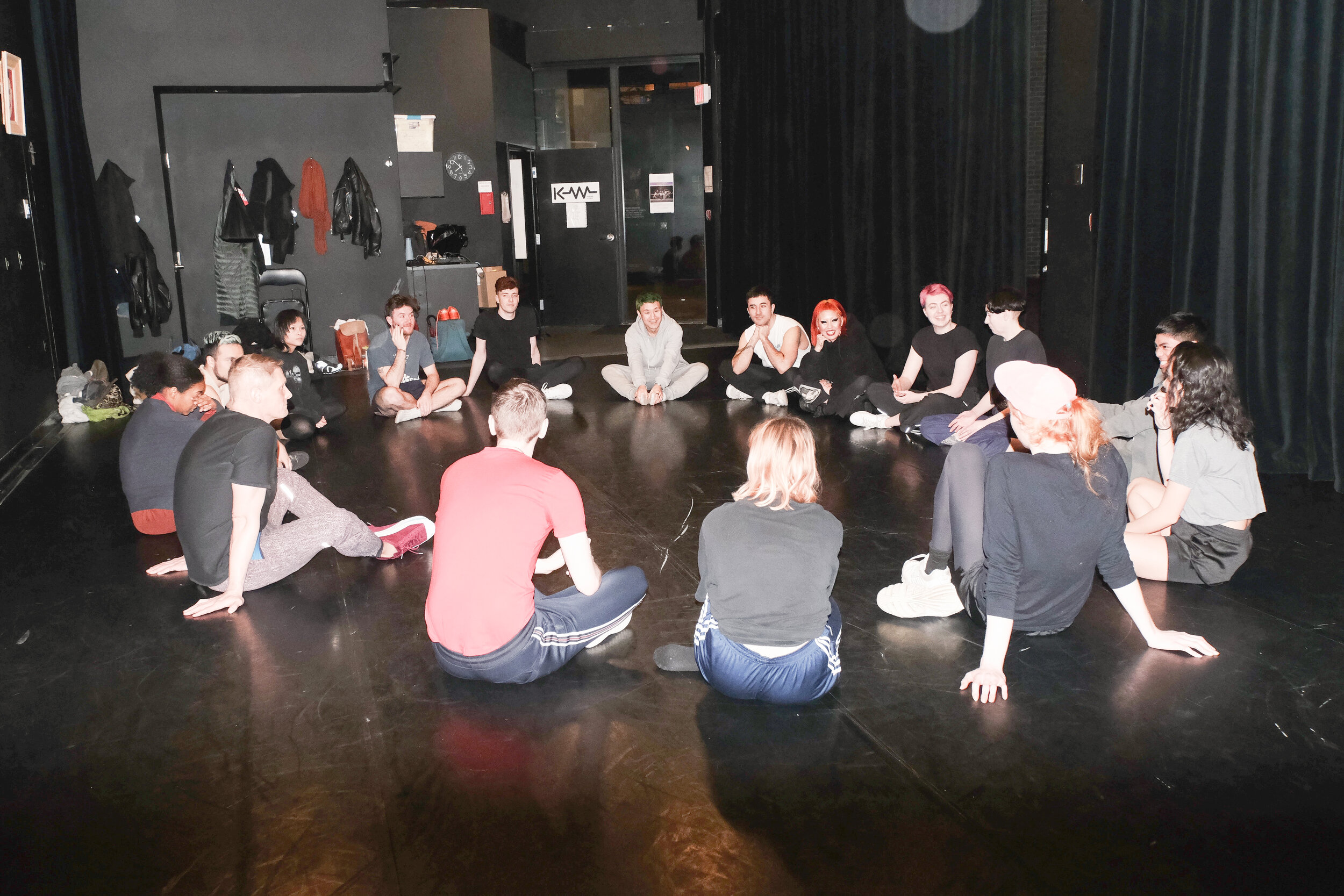
Know your stuff.
“How does everyone and their grandmother know what throwing shade is? How come little white girls in Europe are voguing the house down? And how did a show [‘Pose’ on FX] starring predominantly Black and Brown queer and Trans people become one of the most anticipated television events of the year? Because at a time when the rights and freedoms of queer people of colour are increasingly at risk, the history of Ball and House culture is more vital than ever.”
— LES FABIAN BRATHWAITE
Striking a ‘Pose’: A Brief History of Ball Culture
10s Across The Board
Ballroom culture, drag ball culture, the house-ballroom community, and similar terms describe an underground queer subculture, founded by black trans and queer folks, in which people "walk" (i.e., compete), perform, dance, lip-sync, and model in different categories, which are designed to simultaneously epitomize and satirize gender constructs, occupations, and social classes, while also offering an escape from reality. Category participants are required to “walk” one by one to receive full approval from all judges, known as ‘receiving your 10s’. Competitors are judged on their abilities, “effect” (costumes, appearance, theatrics, presentation), and perceived “realness” (embodied and/or visual believability, authenticity). Those who make their 10s battle one on one against each other for trophies, prizes, and glory.
Ballroom is a countercultural phenomenon, rooted in the necessity of community and safety, and the defiance of oppression.
It is imperative to acknowledge the dynamics of racism and oppression within the queer community which systemically continue to effect QTBIPoC today
Beginning in the late nineteenth century, members of the underground LGBTQ+ community in large cities began to organize masquerade balls known as "drags" in defiance of laws which banned individuals from wearing clothes associated with the opposite gender, and at which competitions and pageants were held.
Although some drag balls at the time (pre-60s) were integrated, the judges were always white, and Black participants were often excluded from prizes or judged unfairly held against white aesthetic standards. This discrimination encouraged Black and Latine(x) members of the community to start hosting their own balls where these oppressed communities could explore, experience, and embody life styles from which they were otherwise excluded from due to systemic oppression.
As documented in Frank Simon’s film, “The Queen” (1968), this tension was captured in the scene where Ballroom Icon Crystal Labeija is recorded expressing her outrage and frustration about the racism in the pageants. Labeija then convinces Lottie, her friend, to host a ball for Black queens which would also be the first to be hosted by a House. It is said that this ball hosted by the House of Labeija in 60s Harlem was the first Black initiated ball which has now became the foundation for the Ballroom scene we are familiar with today.
“For decades, ballroom, ball or house culture has been a way for queer Blacks and Latine[x]s to live their best lives – that is, to figure out how to respond to a society that devalued their lives and attempted to erase their presence. Through elaborate performances incorporating and commenting on race, class and gender, the ball community has historically reflected the American Dream and one’s exclusion from it.”
— Les Fabian BrathwaithStriking a ‘Pose’: A Brief History of Ball Culture
Photo: Everett Collection
A House can be a Home.
The world of Ballroom also extends beyond the extravagant events as many participants in ball culture also belong to groups known as "houses", a longstanding tradition in queer racialized communities, where chosen families of friends live in households together, forming relationships and community to replace families of origin from which they may be estranged. Houses are led by "mothers" and "fathers" who are usually older or established members of the ballroom scene, who are able to provide guidance and support for their house "children".

Strike a Pose.
Vogue is a highly stylized freestyle dance born from house music and the queer clubs of Harlem, New York in the late 1980s. It is a camp style of dance that presents gender as a performance where dancers embody the spirit of extravagance in a way that is purposefully exaggerated and artificial. From applying makeup/"beating the face", to styling hair, donning extravagant clothing, and throwing shade through physical movement, not only does Vogue transform into a physical and emotional way to express stories and fantasies but it becomes a tool in learning to embody ones best self.
Vogue was a nonviolent way of fighting…
and often involved throwing "shade," or subtle insults directed at one another in order to impress the judges and the audience. The competition style was originally called "presentation" and later "performance." Over the years, the dance evolved into a more intricate and acrobatic form that is now called "Vogue” and is generally divided into three phases or styles:
Old Way
(pre-1990)
directly emulated the glamour and posing of high-fashion models in Vogue Magazine with the prestige of Egyptian Hieroglyphics and showcases direct influences from popping and breaking. It is instantly recognizable by the formation of lines, symmetry, and precision in the execution of formations with graceful, fluid-like action. Original competitive aspects of Old Way saw that competitors attempt to pin their opponent to the floor or wall to win.
New Way
(post-1990)
is a direct evolution of Old Way introducing elements of martial arts, contortion specifically characterized by rigid movements coupled with "clicks" (limb contortions at the joints), and "arms control" (hand and wrist illusions, which sometimes includes tutting and locking). Like Old Way, original competitive aspects of New Way also saw that competitors attempt to pin their opponent to the floor or wall to win.
Vogue Fem
(circa 1995)
exaggerates traditionally feminine movements influenced by ballet, jazz, modern dance, and iconic female performers. Styles of Vogue Fem performances range from Dramatics (which emphasizes stunts, and tricks) to Soft (which emphasizes a graceful, beautiful, and easy flow continuations between the five elements). Vogue Fem does not require pinning but is more about storytelling and outshining the competition.
The most popular form in today’s culture is Vogue Fem. Although open to interpretation within various Vogue communities where sometimes elements like hair and/or personality are noted, Vogue Fem in particular typically uses
The Five Elements:
Catwalk
Duckwalk
Hand Performance
Floor Performance
Spins and Dips
Mass Media Effect.
In the way that Punking and Waacking were queer styles of dance born out of Funk and Disco in the 70s, Vogue beats were, and continue to be, heavily influenced by House and Electronic music.
With the introduction of technology in the 80s came, not only Electronic and House music, but an increased accessibility to sound design and production.
DJs and producers within marginalized communities suddenly had creative control of their music and became able to create, experiment, and remix tracks purposefully intended for Voguing which continue to evolve and inform Vogue culture to this day.
“Love is the Message” by MFSB (1974) - one of the greatest dance songs ever made — was both a staple in the ’70s downtown party scene, and the defining anthem of classic, “Old Way” vogue. The proto-disco song’s swelling orchestral strings and jazzy breaks perfectly suited the graceful movements of early voguers. Its signature horn stabs also worked perfectly as cues for the dancers’ freeze-frame poses.
If “Love Is the Message” summed up the spirit of old-school vogue, then “The Ha Dance” is part of modern ballroom’s DNA. Produced in 1991 by Masters at Work duo “Little” Louie Vega and Kenny “Dope” Gonzalez, the song was a staple at clubs, and lifts its iconic “ha” sample from a scene of Eddie Murphy and Dan Aykroyd jabbering nonsense in the film Trading Places.
The 1991 release of “The Ha Dance” coincided with the dawn of Vogue Fem in the ’90s. With its razor-edged metallic crash on the fourth beat which punctuated the new style’s dramatic moves and with Vogue Femme incorporating high-energy tricks with an emphasis on drama and flamboyance — “The Ha Dance” naturally became its defining anthem.
20 Tracks That Defined the Sound of Ballroom,
New York’s Fiercest Queer Subculture
Voguing truly exploded
out of the clubs and into the mainstream in the late 80’s when Willie Ninja collaborated with Malcolm McLaren to put out “Deep In Vogue” (1989). Shortly after Madonna catapulted the form even further by featuring Old Way Vogue with dancers Jose Gutierez Xtravaganza and Luis Camacho Xtravaganza in the single and video, "Vogue" (1990). The form was then solidified in mainstream queer culture when showcased in the 1990 documentary, Paris Is Burning, went on to win the Grand Jury Prize at the 1991 Sundance Film Festival. In its modern form, this dance has become a global phenomenon that continues to evolve both stylistically and demographically.
VVJ Online Education
VVJ has offered interviews, classes, space and platform for online Ballroom Education during the pandemic as ways to share and connect to Ballroom globally. Speakers include Legendary DJ MikeQ, Twisted Miyake Mugler and OldSchoolBallrooms Felix Milan to name a few.
Interested in learning more?
References:
Washington Post
”On ‘Pose,’ dancing isn’t just about self-expression. It’s a survival skill for trans women.”
Mixmag
”A Brief History of Voguing””Vogue: Not Madonna’s Dance”
”Striking a ‘Pose’: A Brief History of Ball Culture”
“Listen, and You Will Hear all the Houses that Walked There Before: A History of Drag Balls, Houses and the Culture of Voguing"







